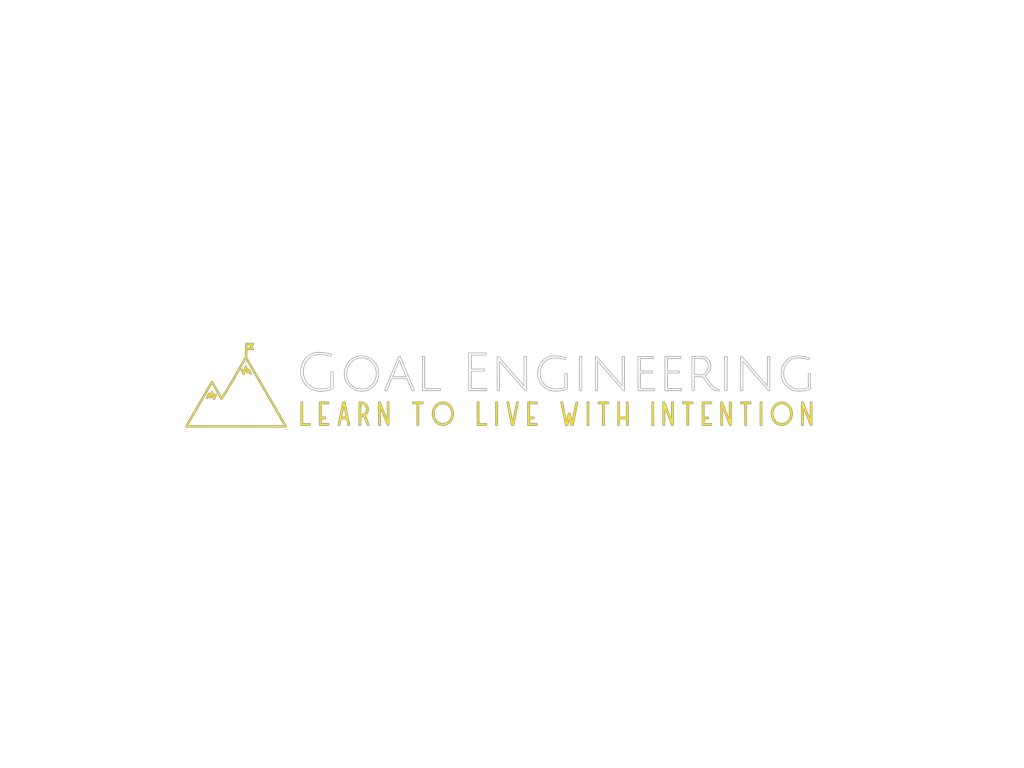As I’ve been searching the internet to see what other people say about the steps in the goal-setting process, I’ve been really disappointed at how complex people make it. Setting goals doesn’t have to be so difficult. And I’m going to teach you how to make it easier in just four steps.
Here are the only four goal-setting steps you need to follow to achieve your biggest dreams:
- Set only a few high-impact goals.
- Plan daily action steps that wil lead to accomplishing weekly milestones for each goal.
- Act on your plan.
- Track your progress daily and weekly so you can perfect your goals.
The process is as simple as set, plan, act, track. Let’s get right into the details of this goal-setting process with step one!
1. Set
It’s easy to get stuck thinking about what goals you should set and getting overwhelmed by all you want to change about your life. But there’s a quick way around that.
Start by writing down everything you want to achieve in the four main areas of life:
- Faith
- Family
- Finances
- Fitness
You can learn more about these areas and why they’re vital to your growth in this article I wrote about them.
In short, these are the only aspects of life you need to focus on if you want to be happy and successful. Everything you do falls into one of these categories, so by focusing your energy on just these four, you significantly improve your efficiency.
Plus, when you grow in one area, you grow in all of them. By setting just one high-impact goal in each, you’re establishing the best possible foundation for growth.
Once you have your list of about 5-6 goals in each category, cross out unimportant goals. Use The ONE Thing question to guide you:
“What’s the One Thing I can do, such that by doing it, everything else will be easier or unnecessary?”
You can eliminate lower-impact goals however you want. I like to go through all of my goal ideas one area at a time thinking about how my life would be different if I accomplished that goal by the end of the next quarter. If I can see that other goals on my list would be accomplished if I focused on that one thing, I know that it’s the right goal to focus on.
When you’re done, you should only have four goals that, if you achieve, will make a big difference in your happiness and success.
2. Plan
A lot of people get bogged down with the SMART goals framework when planning out their goals. The problem is, it doesn’t really work. There’s a much easier way to make your goals effective and it’s to break them up into these two parts:
- Outcomes
- Action Steps
An outcome is the end result of what you’re working on. It’s the actual goal you’re striving for. It might be losing weight, reaching an income milestone, or improving your social life. These are things that you cannot do without some other action happening first, which is where action steps come in.
Action steps provide the path you’ll take to reach your outcomes. These include things like running every day, making a certain number of sales calls each week, or going to social events every Friday. These are not end goals themselves but part of the end goal because without them no goal is possible. Most action steps happen daily or weekly.
You want to establish at least one weekly outcome and one action step for every goal you set in the previous step. Let’s look at an example to see how this works.
Say that your fitness goal is to lose some weight. Your outcome would be something like “lose one pound per week.” The action steps could include “Play Just Dance with my kids for 30 minutes 3x per week” and “eat until I’m 80% full at every meal.” If you do those action steps you should see yourself losing a pound per week.
You’ll want to make your outcomes and action steps specific to your own goals, skills, and needs. Don’t worry about getting this just right though. You only get the information you need to refine your goals after you start, which is step three.
3. Act
Nothing will happen until you start working on your goals. You cannot progress without effort. And more importantly, it’s easier to work smart after you’ve worked hard.
The key here is to recognize the inherent value in action. At this stage, you want to have a gigantic bias toward action. You want to embrace the attitude that action is the best possible thing for you to do to reach your goals. This is known as an action mindset and you can learn more about it right here.
In summary, an action mindset is when you default to working because you know that it will get you farther than thinking or planning. You’ll improve faster and feel better if you stop thinking and just act on your plans and ideas, even amid imperfection. Repetition is how you improve and you master repetition with an action mindset.
To master this mindset you’ll need to be okay with your work being imperfect at first. You also need to be confident enough in yourself to go at the pace that’s right for you. And most of all, you need to remember that action leads to improvement faster than anything else.
But what about working smart though? I mentioned earlier that you need to work hard first then you can work smart. Action is necessary to get the ball rolling. The next step is where the real magic of focused attention and smart work begins.
4. Track
The main benefit of tracking your goals is primarily, I’ve found, to be able to make them as effective as possible.
Once you start going you can see a few crucial things that will guide you to refine your goals to be the best they can be:
- Whether or not your action steps are leading to your outcomes.
- Whether or not you are even doing your action steps.
- If your outcomes are the actual goals that you want to achieve.
Getting this data is why action is so vital. But without tracking you’ll never be able to utilize it to see success with achieving your goals.
To track your goals, find a way to record how you do at your action steps each day and whether or not you achieve your outcomes each week. That might be an app, journal, pen and paper, or my personal favorite—a spreadsheet.
At the end of each day, record whether or not you did your action steps for that day. You should have four of them, one for each goal you set in step one.
When the week is over, spend an hour or so reviewing your efforts to do the work to reach your goals. Write about how well these helped you accomplish your outcomes.
Once you can see how things are going, you can adjust as you need to.
If you’re not doing your action steps or if they’re not leading to your outcomes, change them to be more aligned with your strengths. Go for a long walk instead of running, for instance.
In the case that you are reaching your outcomes and you’re not happy, change your goals! There’s no point in continuing to work on a goal that isn’t right for you. Quitting what’s wrong or just mediocre will let you use your precious time and energy on what will really make the biggest impact in your life.
Let’s Wrap This Up
I’ve been trying the set, plan, act, track method for the last couple of years and it’s amazing at how well it works. My goals are more effective, more enjoyable to work on, easier to remember, and always end up being just what I need to live the best life possible.
Start small with this method today by setting one goal in each of the main areas of life, establishing action steps and outcomes for each of those, and setting up a tracking system to keep you accountable and make your goals effective. Once you’ve done a little preparation, get to work and you’ll start to see that these goal setting steps are all you need for success.





